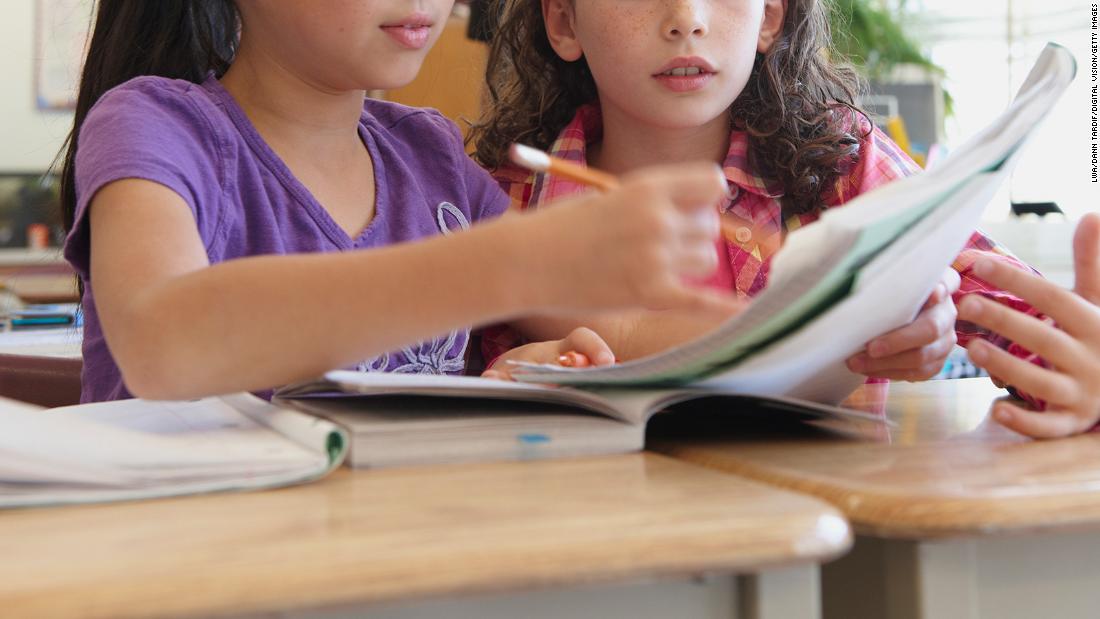
My 9-year-old’s previous school tried to teach him skills such as self-regulation and empathy, but in practice the whole thing felt like just another item on his busy teacher’s daily checklist. The kids would rush through an eight-minute breathing exercise, only to be rushed off to their 10-minute lunch and 10-minute recess. I suspected they would learn more, socially and emotionally speaking, from extra time spent eating and playing — and by skipping the mini-meditation.
But when my son switched schools last year, I saw how effective SEL can be. Like most kids, he entered the 2021-22 school year socially and emotionally bruised by the pandemic. His ability to trust educators, the academic process and his peers, and to motivate himself and take responsibility for his actions, had all been wounded.
The new school anticipated these would be issues for many and spent the first two months working on social and emotional skills. Unlike the previous school that focused on learning how to regulate behavior, his new school’s SEL curriculum put relationships at the center and wove these lessons into everything they did. Individual pursuits such as self-control and resilience were present but always part of a larger aim to improve personal and communal connections.
It worked. “We feel like we got our son back,” my husband would tell people when they asked how he was doing. I felt the same. His ability to focus on academic work returned, as did his willingness to hug relatives.
Still, the pandemic has left its mark on both my older son and my younger one, a rising kindergartner, neither of whom are as sure-footed as they likely would have been should Covid-19 never have happened.
What is SEL?
SEL can take place informally and formally through conversations, exercises and activities. Experts say that no one-size-fits-all program is best for any school or community, but that cramming SEL into one short session during the day should be considered a red flag.
“With SEL we saw a shift from ‘What is this kid doing?’ to ‘What is this kid experiencing?’ That makes all the difference in the world because it isn’t about what is wrong with kids, but what is going on with them and what is happening in their lives that is making them behave a certain way.”
Why our kids need it now
Two-plus years into Covid-19 and many of our kids are lonely and exhausted, said Aaliyah A. Samuel, CEO of CASEL. They’re “not just exhausted by academics but mentally exhausted,” she said. “And they’re not feeling connected to school.” They need a reset, help finding their way back to a place where being at school energizes them rather than depletes them, according to education experts.
Kamenetz said the teachers and school leaders she’s spoken with are also seeing more of what they call “regressed” behaviors, such as kids bringing toys to school at older ages. There are also many reports of kids seeming socially overwhelmed at school and escaping by hiding in the bathroom or behind the screens of their phones.
Teachers and principals may be tempted to ignore such behavior and focus only on catching children up academically, Elias said. But doing so risks children falling even more behind.
“One of my big concerns is that educators will only do the six-minute SEL teaching to increase time on academics, but that is a prescription for disaster. Because if we have learned anything from the pandemic, it is just how important relationships are in every aspect of life,” he said. “If we want our kids to get back on track (with) academic learning, we have to do this first.”
The reason, he said, is that it is our “emotional brain,” rather than our “thinking brain,” that allows us to sit down and learn. We can’t progress much academically if our emotional brain is unsettled. Only when students feel safe and connected to teachers and peers will they feel ready to get to work, education experts said.
It is also our emotional brains that allow us to handle this uncertain moment, and the many uncertain moments that will follow.
“We are preparing our kids for a future, and we don’t know what it is going to look like,” Samuel said. “The world is changing fast … and we need to help our kids be flexible and nimble to handle those changes in the world as they happen. Because change is inevitable.”
What can parents and caregivers do?
Parents and caregivers worried about their children’s SEL learning loss can start by asking the school and teachers about their program, Kamenetz said. Ideally their approach is an integrated one, woven through the day, with lots of different facets that reach children in different ways.
There might be moments when they learn to label and manage their emotions, when they learn to work together, when they learn to respect other children, including those different from them, and when kindness and empathy are rewarded.
Parents and caregivers can work with teachers to figure out their kids’ strengths and weaknesses and try to weave these lessons into the home.
Another possibility: Adults can try to engage in some SEL of our own, which we’d all probably benefit from after the past few years. We could make time to talk about labeling and processing our feelings with our children, the bad and the good, and work on self-regulation and resilience. We could also talk about all the ways our good relationships benefit us and how we struggle to connect due to the pandemic, too.
“Ultimately, this is not about human perfectibility,” Kamenetz said, “but the fact that these are skills that we work on throughout our lives.”
Elissa Strauss covers the culture and politics of parenthood. Her book on the radical power of parenting and caregiving will be published in 2023.
